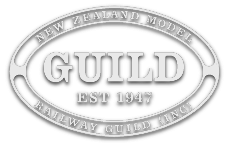Wa locomotive
-
Wa locomotive
With the Christchurch show upcoming I’ve been trying to complete some locomotives to flesh out the roster.
Wa217 got it’s coat of primer yesterday and is presented here for your delectation in photographic grey. A sand blast and prime is always an interesting point in loco building as you finally see what you’ve actually got. Bare metal looks nice too, but not the same as a painted finish.
There’s a few things to do that will wait until it’s painted – weather shields to fix, the nuts for the eccentric rods, cab interior, glazing, a tank top toolbox and so on. The plan is to fill the cross slots in the crankpin heads to give a smooth finish. Just what to fill them with is up for debate as it needs to be paintable yet soft enough to be easily removed for disassembly.
I feel the Wa represents something of a milestone in my personal model building. It’s the first locomotive where I feel I’ve got a good (ie readily workable and reproducible) solution for all those little niggly bits that a build typically involves. That’s really good for future projects as almost all the problems will have solutions before I even start. Wa217 has been a bit of a test bed so some of those innovations are not fully realised here, but the methods at least have been proven. It’s not that clever, just a combination of experience and working out effective methods that match my skill set and tool kit.
It’s been a long time coming, but the actual hands on modelling for this was not that great. There’s a lot of detail and that takes time, but basically it was all fairly straightforward as most of the detail is in the castings. (I did have a persistent bind that took ages to resolve). John Atkinson is to blame for the the little cocks below the footplate to control cooling water to the main bearings. He proved it was possible on his model of 289 so I had to give them a go too. They’re about the only bit on the loco I’d describe as “scratchbuilt”. The rest is mostly etchings, castings and the odd 3D print.
Wa217 is in 1/64. It runs on scale wheels and has a fully compensated split frame chassis. The main bearings are ball races and it’s powered by a coreless motor through a 2 stage 50:1 reduction box. This is more or less identical to the set up in my W kit.
-
This discussion was modified 1 month, 3 weeks ago by
Lawrence.
-
This discussion was modified 1 month, 3 weeks ago by
Sorry, there were no replies found.
Log in to reply.

